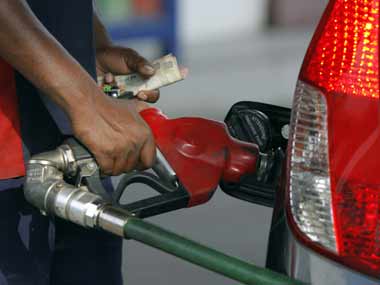Blended petrol was launched with much fanfare and expected to change the fuel dynamics of the country. But, to the contrary, the much hyped Ethanol-Blended Petrol (EBP) programme, launched in 2001, has failed to meet even half of its first phase target of 5 percent.
At the time of launch the EBP programme was expected to be increased to a blending ratio of 10 percent ethanol and 90 percent petrol.
Failure of the programme can primarily be pin-pointed to poor planning. As against a requirement of 101.66 crore litre, oil marketing companies (OMC) received an offer for only 60.74 crore litre.
[caption id=“attachment_251654” align=“alignleft” width=“380” caption=“For OMCs, buying ethanol makes sense at a time when the government restricts them from increasing prices.”]  [/caption]
A haphazard process of tendering affects the inventory management of sugar mills which has the option of diverting the ethanol for food and industrial grade purposes.
As ethanol is produced from sugarcane (molasses, a by-product during the production of sugar) - who’s crushing period is from October to April- sugar manufacturers need to plan the production during this period. If the tenders are ad-hoc and not corresponding to the crushing period, few mills are likely to be in a position to provide the same during the tender.
The government has fixed the price of ethanol at Rs 27. Given the rise in sugarcane procurement price, mills have been complaining that this price is inadequate.
For oil marketing companies (OMC), buying ethanol makes sense, especially at a time when the government restricts them from increasing prices which is necessitated due to rising oil prices and a falling rupee.
It is estimated that OMC’s benefit to the tune of Rs 8 per litre by blending ethanol with their petrol, which has a higher cost of production.
It is mainly government machinery and the bureaucratic hurdles that have resulted in the failure of the EBP programme - with inter-state taxes, state policies on selling ethanol to other deficit states and clearances from the excise department, being reasons for the deficit.
EBP, when fully implemented at 10 percent blending, has the potential to reduce crude oil consumption in the country. There is also no supply issue, as India is the fourth largest producer of ethanol.
Furthermore, the country has not yet explored production of ethanol from cane which is prevalent in developed countries.
Though India does not have crude oil reserves, it has the potential of being a global supplier of ethanol, provided the government gets its act in place.


)
)
)
)
)
)
)
)
)



